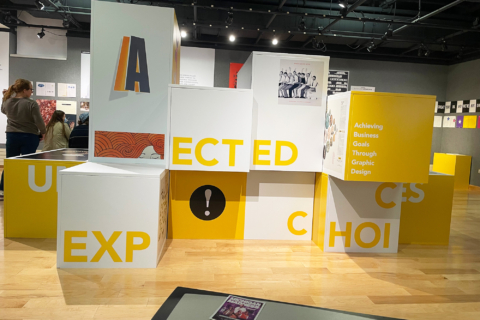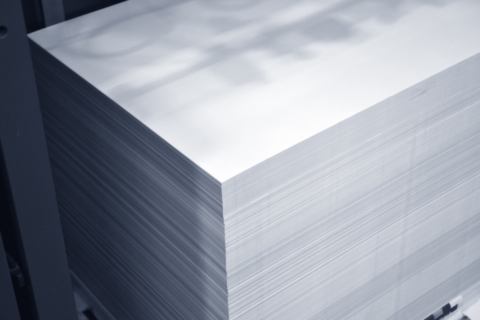Header image credit: Unknown
While most of the focus for designers is typically interpreted on creating the visually pleasing and effective compositions and touchpoints, another often overlooked portion is the thought going into the production of those touchpoints. Things like websites and apps are virtual and don’t require too much thought besides conceptual planning for different platforms and devices, but more physical touchpoints require more planning to go into the materials, cost, production, and other attributes.
Before
Having a Reference

Image credit: Architizer
Every stage of the design process requires a careful thought of professionalism and planning into the final version of the resulting design. When considering things like posters, business cards, physical spaces, products, packaging, and other physical touchpoints, it’s important to have a good idea how those things take shape. By forming an idea of what these touchpoints are in the physical space through references, designers can more accurately design their touchpoints for final real-world application.
Estimating Future Cost

Image credit: The Balance Careers
In addition, thinking put into the physicality and production of a touchpoint makes the designer more aware of the final cost an each of this touchpoint will be to make. Keeping in mind the cost of production ensures the designer is conscious of the client’s finances. By doing so, you are capable of bringing them a more realistic and feasible design solution.
One method of doing this is by preparing generic quote request forms and gathering quotes from a variety of different production sources. By doing this, you have a pool of possible producers to reference for the final solution as well as a range of possible production techniques, costs, and qualities.
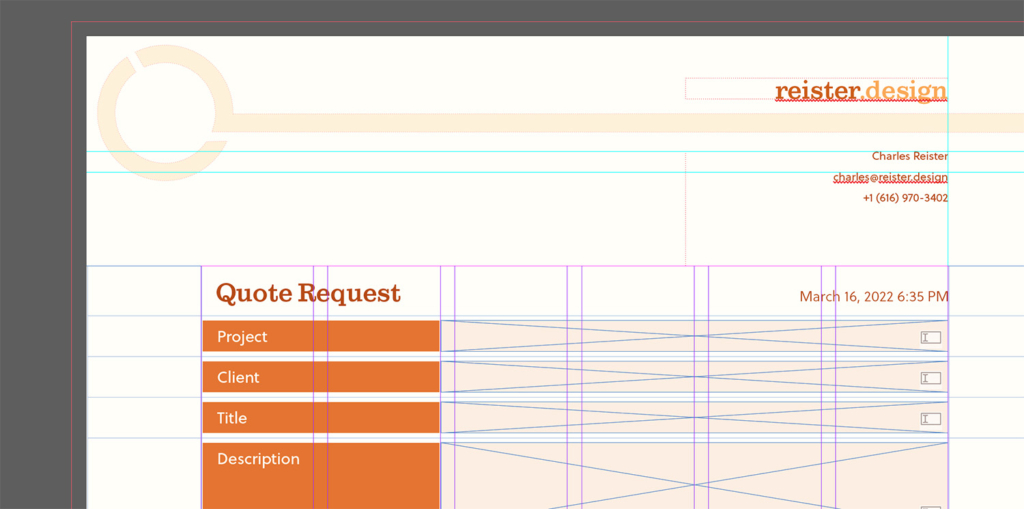
Having a form at the ready that is easily reproducible makes this process a lot quicker than re-drafting your form every time you contact a new producer. For this, I highly recommend creating a digital template of your form that you can use to either print and fill out for mailing or fill out digitally and send electronically, depending on how it needs to be sent. Having that versatility is important for a designer in general, but especially when trying to cast a wide net.
During
Getting Stuck
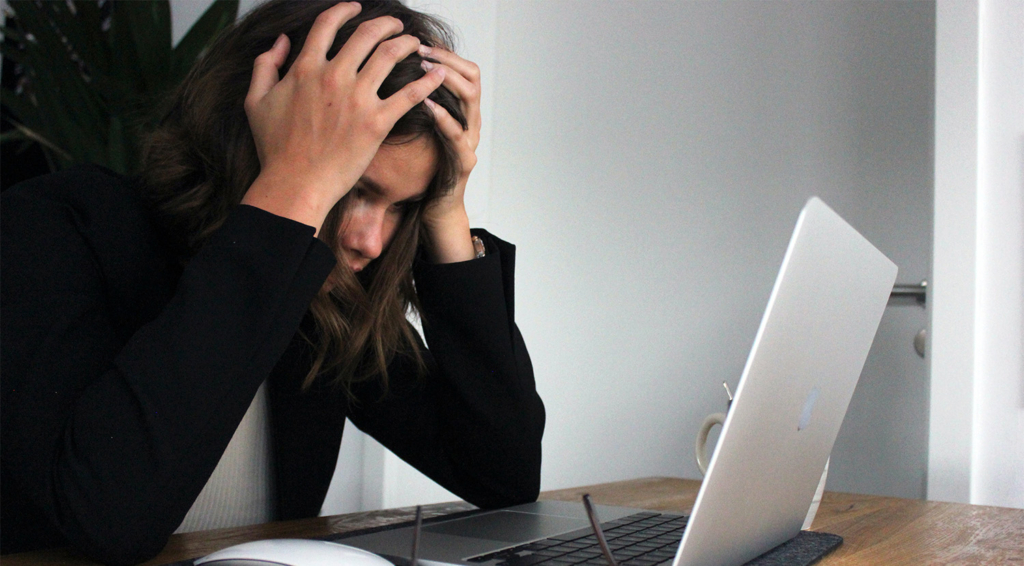
Image credit: Elisa Ventur on Unsplash
Keeping in mind the realities of production are a great tool for creating realistic design solutions. When I get stuck and the conceptual part of the design is at a standstill, turning to the production aspect of the design helps me identify issues within my designs and gives me new things to improve. One tried and true method for printed media that has always helped me improve my design decisions is having a printer on stand-by to print out my current design and view it off the screen. By doing so, I can better judge what the final version would look like, since that version will not live on the computer screen where I am designing. This also provides a much-needed break from looking at my bright screen all day.
The Production Checklist
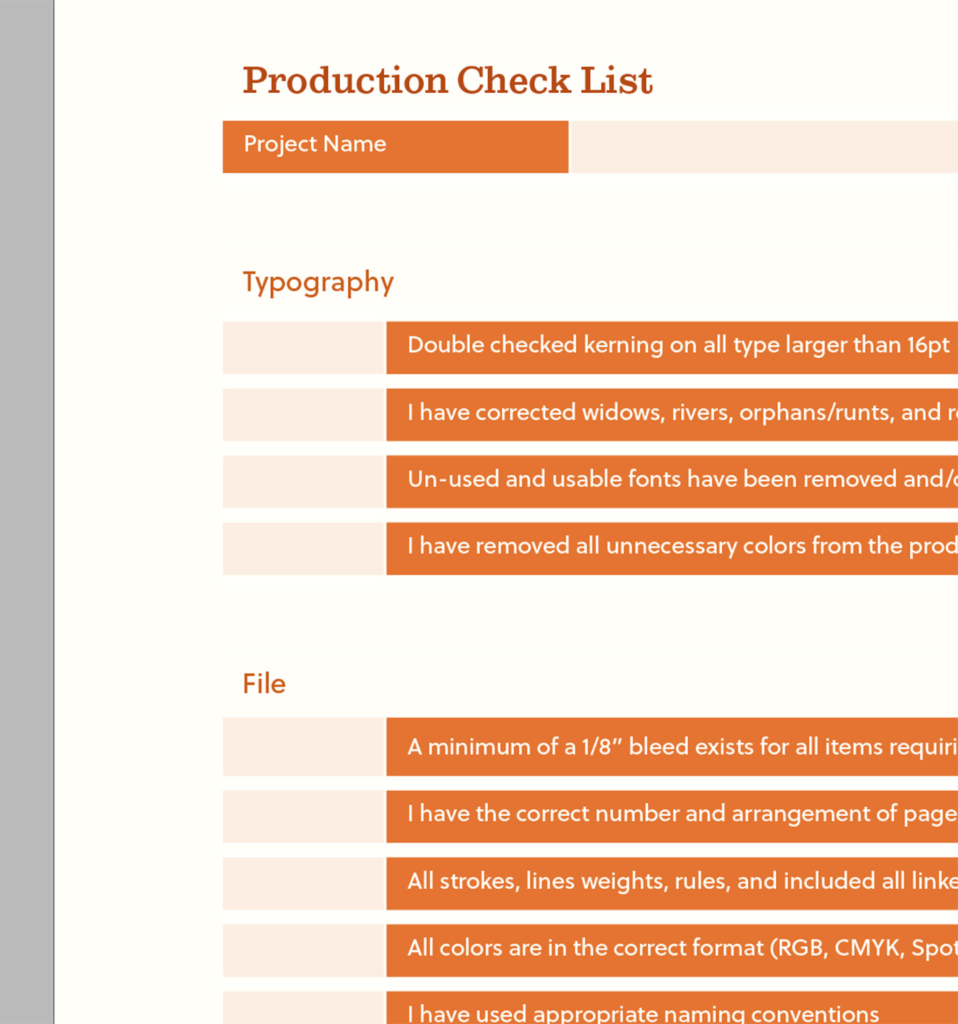
I also use a production checklist, which mostly serves to ensure I take all the necessary steps when producing something, to help me when designing. Many of the items on the list deal with typography and file standards, so being mindful and applying these early on in the process ensures I don’t run into issues later down the line or have an extension “clean up” at the end to make my solution production ready.
After
Cooperation and Unity in Production
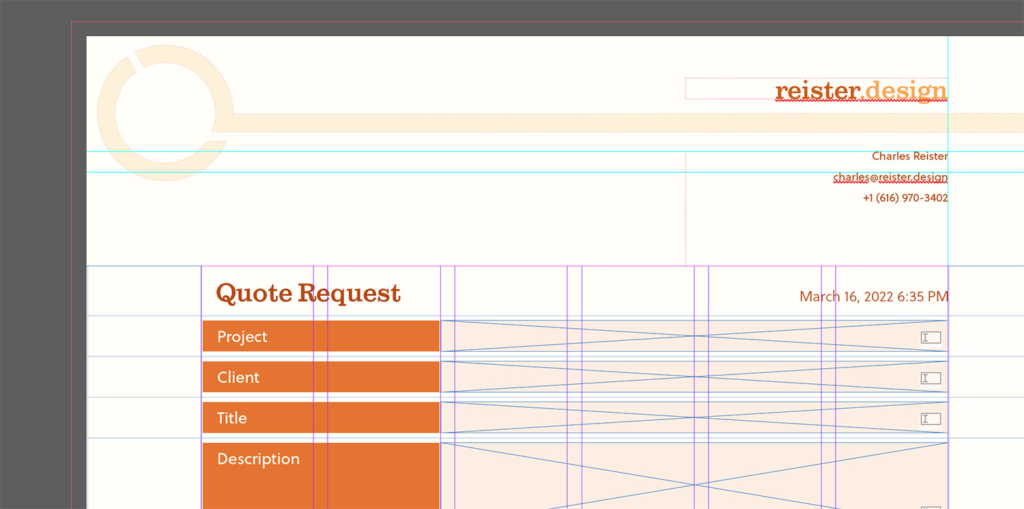
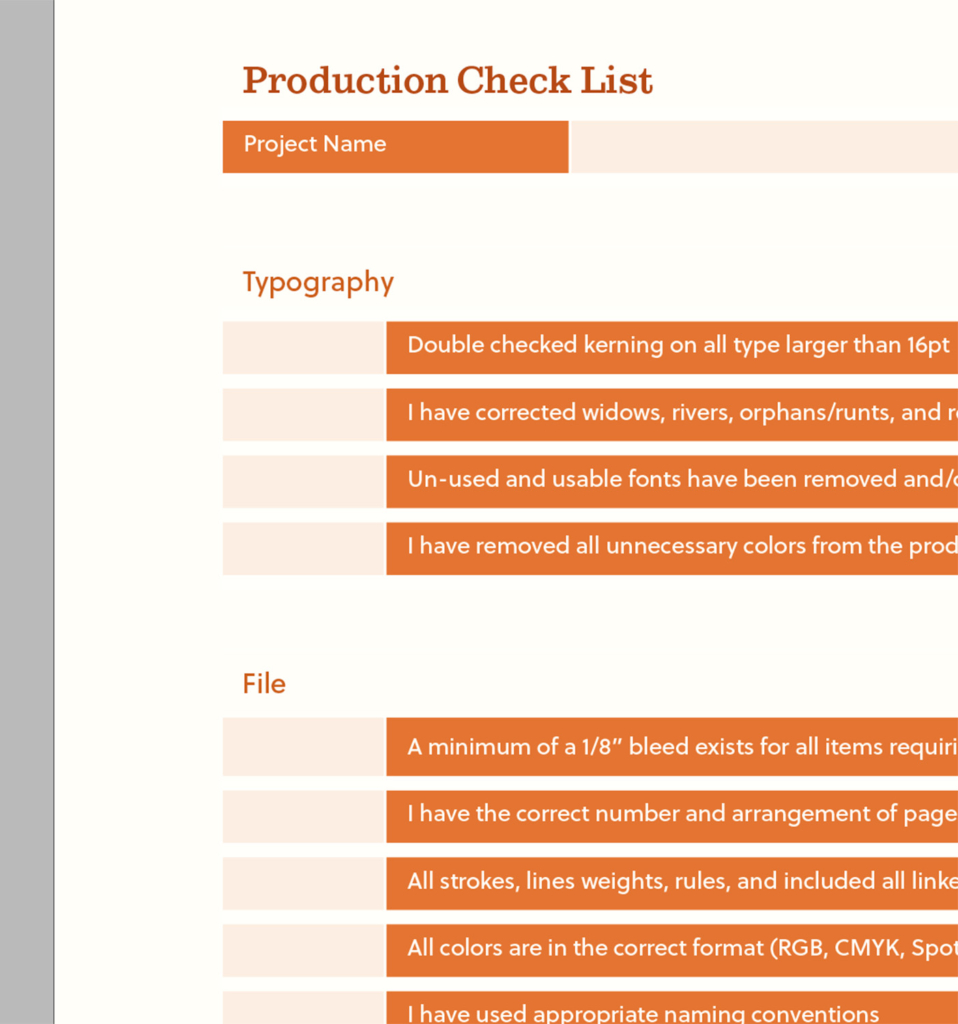
Design solutions are not created in a vacuum. Unless you’re operating as a solo freelancer, you’re going to have to share your progress and production criteria with others, which means you have to be prepared for that. If you followed my recommendation to have digital production forms, this will make the sharing process easier as you’re able to then share these forms more easily with others and allow them to read and use them to continue the production process with a unified communication format. This makes the exchange of information much more efficient and easier to comprehend for the client and external producers by providing and easy-to-follow and cohesive documentation to the production of your solution.
Using Our Forms to Our Advantage
As designers, we need to consider every aspect of our designs to ensure they communicate exactly as we… well, designed! Creating forms for specifications, estimates, invoices, and other things that articulate just how this thing will be produced, how much material it will take, and how much it will cost makes the whole process faster and clearer, as well as provide a stronger sense of control over the final physical form it takes.
The Power of the Mock-up
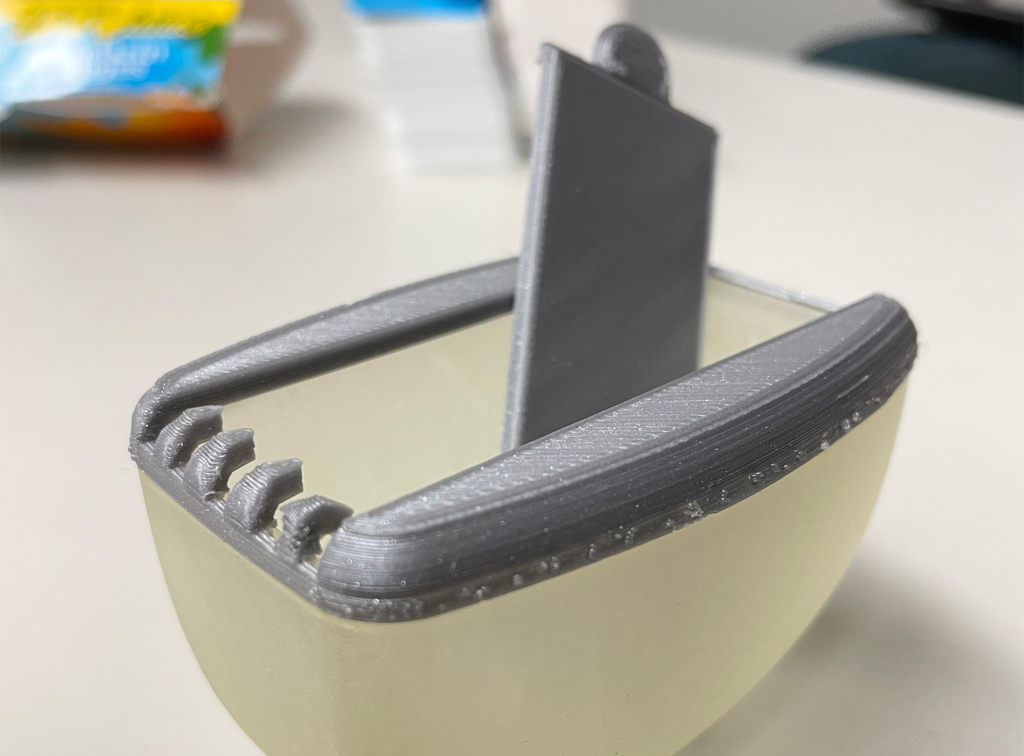
In addition to the forms, providing mock-ups and prototypes creates an even clearer image of the final form for both the client and the producer by having something that was under your complete control and shows the physicality that forms, digital mock-ups, and design files just can’t replicate.
As most designers know, the creation of some solution is much more than just drawing a pretty picture. It takes planning, preparation, careful thought, and constant improvement and double-checking yourself. By making that process easier for yourself, you can be much more efficient and effective in your design solutions and a more valuable designer.


